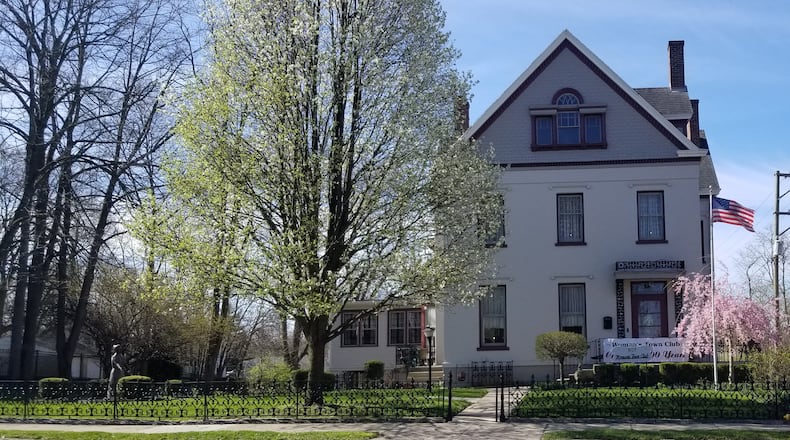The paper reported on Feb. 1 that the Federation would “stand by the Springfield Business and Professional Women’s Club in its efforts to close the retail stores of Springfield at 6 p.m. Saturdays” so women could go home.
In addition, Club President Anna B. Johnson “urged cooperation in making Springfield a smokeless city,” aligning the club with an effort to protect the poor who were subject to the smoke, dirt and other health hazards associated with living in or adjacent to the Springfield’s heavy industries.
The Daily News story also listed club accomplishments of the previous year, including: taking the first city and county survey of the “physically handicapped;” “raising (money for) pensions for the blind;” increasing the budget of the public library; and establishing in its own organization new departments on art, public health and the support of newly naturalized citizens.
All this had taken place just two years after women had gained the right to vote and were beginning to feel more at home in the public sphere.
The move into 805 E. High St. also served as a reminder of the huge role Springfield women had played in that advance during the previous three decades.
The club house is the one-time home of Clementine Berry Buchwalter, who brought women from around the state to Springfield in 1894 to found the Federation of Woman’s Club and was a founder of the international General Federation of Women’s Clubs. Her extraordinary life is remembered in a bronze statue that sits in the side yard of the Woman’s Town Club.
“She was a national figure,” said Chris Zechman, current president of the Springfield Federation Women’s Clubs.
Member Kim Buchwalter, the wife of Edward Buchwalter IV, the grand-grandnephew of Clementine’s husband, Capt. Edward Buchwalter, said that at a time when the ability to read and write wasn’t commonplace, “she was instrumental in bringing traveling libraries to Ohio” and the nation.
Kim and Edward restored a Buchwalter presence to the Town Club last year by donating family china and furniture, including the captain’s desk, which is displayed in a room with his portrait.
Its presence seems appropriate for a man who was as supportive of the club after his extraordinary wife’s passing as he had been of her role in the club movement.
Kim Buchwalter said the Captain often accompanied Clementine on her visits to state-level organizations around the country.
In 1922, the Captain donated $5,000 toward the sale of his residence to the Town Club, which thanked him warmly.
“The club deeply feels grateful to Capt. and Mrs. Buchwalter (he remarried) in their thoughtfulness at leaving the house in such excellent condition. The walls were re-tinted, some of the woodwork repainted, and all the hard wood floors refinished by the kindness of the late tenants.”
Zechman said the remaining $20,000 of debt “was paid off in the first year,” largely by club members’ purchase of stock certificates, an indication that many were well off.
That the Town Club added a Tea Room to the structure in 1923 also indicates strong financial support.
Although the support from founding members is remembered when the club provides honorary stock certificates to members today, today’s members have been frustrated in their attempts to find out more about the founders.
“We don’t really know who they were because they always went by Mrs. John Smith, Mrs. William Lawson,” said Zechman. “We don’t know their first names.”
Kim Buchwalter, who has done her level best to track them down, said the situation was exacerbated when later club members “held on to the tradition” of using their husbands’ names in club records as a way of honoring the founders.
Her research has, however, turned up charming and valuable material that can be found on the Woman’s Town Club Facebook page. Stories of card parties that drew 250 to the house during the early fundraising efforts are reminders of an organization that once had 500 members.
Such accounts help to explain both the influence of the clubs and the women’s hopes at one time to raise $80,000 to build a performing venue on land behind the current clubhouse.
Zechman says the current membership of 66 is a fraction of what it once was, but the club women remain “true to the spirit” of the Woman’s Town Club by supporting community organizations and causes. Among them are Springfield’s Civic Theater, Symphony Orchestra, literacy center and the Second Harvest Food Bank of Clark, Champaign and Logan Counties.
In addition to all that, she said, they uphold another women’s club tradition: “We have a lot of fun and support each other.”
One last thing: The club rents space for parties and occasions of all kinds for those who don’t have ample rooms of their own.
For information or to become involved, support or rent the Woman’s Town Club, send emails to wtcspringfield@gmail.com.
About the Author

